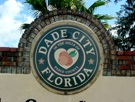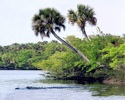My Towns

Bristol (my birthplace) is on a peninsula and is located about fifteen miles south of the capital city of Providence, Rhode Island. Rhode Island is the smallest of the fifty states with an area of just 1214 square miles. Bristol’s fame is never more evident than on the 4th of July when its population of 20,000 swells to near 250,000 for their annual 4th of July Independence Day Celebration and parade. Bristol’s Parade is the oldest in the United States with its first observance taking place in 1785. It is the longest continual Fourth of July celebration in the country featuring a 3.5 mile parade with thousands of marchers. Former residents return year after year just to be a part of this tradition.
Thirteen miles south of Bristol is the area of Newport famous for the America’s Cup Races. A shipbuilding boatyard in Bristol was the construction site for eight consecutive winning America’s Cup yachts and World War II PT boats. Bordering Bristol on the east side is Mt. Hope Bay which merges with Narragansett Bay on the west. The town was incorporated in 1681 and is also part of Bristol County named for Bristol, England. It is one of the smallest counties in the United States. Before the arrival of British colonists, Bristol was the summer residence of “King Philip” (Metacomet) of the Wampanoag Tribe, a member of the Pokanoket Indian Nation.
After the textile, manufacturing and shipbuilding industries closed Bristol became a college town in 1969 when Roger Williams University established its main campus at the tip of the peninsula. The University was named after Roger Williams who founded Rhode Island.
Bristol, Rhode Island




Upon retirement I moved to Dade City, Florida, after vacationing for many years in Florida. Dade City is about thirty miles northeast of Tampa in the ‘hills’ of Pasco County. We are surrounded by cattle ranches, dairy farms, miles of open land and abundant wildlife. Dade City was incorporated about 1885 and was named for Major Francis Dade, who with 110 other soldiers was slain in a Seminole ambush 1835. The founding of Fort Dade protected homesteaders in the region but it wasn't until the arrival of the railroad in 1884 that the present-day Dade City boomed. Population is around 6,000.
During World War II a prisoner-of-war camp was situated in Dade City. The prisoners were German soldiers who were in Rommel’s Afrika Korps and were captured in North Africa. While imprisoned the men made limestone bricks, built warehouses, and made boxes. The POW camp operated from approximately 1942 to the spring of 1946. A number of the prisoners chose to remain in Dade City when the war was over and became residents.
Dade City (at one time) had two of the largest citrus packing plants in the world. The procedure for making orange juice concentrate was, to a large degree, developed at Pasco Packing Company. The towers at the plant were used for making cattle feed out of orange pulp. After two devastating freezes in the eighties which all but wiped out the orange trees, the company closed and present day the enormous plant has become an industrial park with numerous smaller businesses. Dade City is home now and because of its abundant wildlife, flowers, parks, it has afforded me the opportunity to pursue my other passion, nature photography.
Dade City, Florida
















